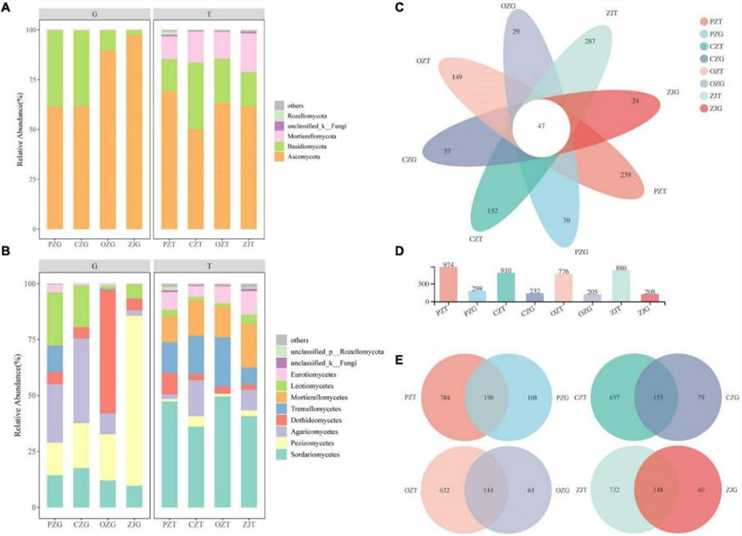Fungal Community Structure Analysis
Fungal community structure analysis is an essential part of fungal genome analysis. The composition of the fungal community is obtained by analyzing the composition of sequenced sequences. The analysis of differences in the composition of fungal communities in different environments can help us to explore the relationship between fungi and environmental factors or hosts and search for genes that are signature fungal communities or specific functions. Lifeasible can provide two methods for fungal community analysis. One is to analyze the composition and diversity of fungal communities by amplifying and sequencing large ribosomal subunits, small ribosomal subunits, and internally transcribed spacer regions. The other is macrogenome sequencing, where all fungal DNA is sequenced without isolating and culturing the fungus to analyze the fungal community composition and genetic composition and mine the genetic resources with application value.
 Figure 1. Schematic diagram of the results of fungal community analysis. (Ma W et al., 2021)
Figure 1. Schematic diagram of the results of fungal community analysis. (Ma W et al., 2021)
- Structural analysis of endophytic fungal communities.
Endophytic fungi in plants commonly survive in all parts, tissues, and cells of plants and are an integral part of the plant micro-ecosystem. We can provide structural analysis of endophytic fungal communities based on large ribosomal subunits, small subunits, internally transcribed spacer regions, and ribosomal RNA.
- Structural analysis of mycorrhizal fungal communities.
Mycorrhizal fungi are a group of widely distributed fungi that are symbiotic with the roots of terrestrial plants and have essential ecological functions. Mycorrhizal fungi can provide numerous benefits to host plants, including enhanced nutrient uptake, increased host plant tolerance to abiotic stresses, and resistance to biotic stresses. We can analyze the effects of biotic and abiotic variables on mycorrhizal fungal community structure based on the sequencing of large ribosomal subunits, small subunits, internally transcribed spacer regions, and ribosomal RNA.
- Structure analysis of soil fungal communities.
Soil fungi are important members of the ecosystem, and toxic fungal communities invade plants through the soil and cause harm to their growth. We can extract total dirt microbial DNA by amplicon sequencing technology to analyze soil fungal community structure diversity.
The specific services we can provide for fungal community structure analysis are as follows, including but not limited to:
- Analysis of the α diversity of fungal communities
- Analysis of the β diversity of fungal communities
- Analysis of fungal community composition
- Analysis of dominant fungal flora
- Relative abundance analysis of fungal community phylum level
- Relative abundance analysis of fungal communities at the genus level
- Fungal community succession analysis
Lifeasible can provide structural analysis of endophytic fungi, mycorrhizal fungi, and soil fungal communities based on amplicon sequencing technology. As your trusted partner, we can meet your fungal phylogenetic analysis needs and provide you with efficient, high-quality services. If you want to know the details, please contact us.
Reference
- Ma W, et al. (2021). "Characteristics of the Fungal Communities and Co-occurrence Networks in Hazelnut Tree Root Endospheres and Rhizosphere Soil." Front Plant Sci. 12: 749871.
For research or industrial raw materials, not for personal medical use!
 Figure 1. Schematic diagram of the results of fungal community analysis. (Ma W et al., 2021)
Figure 1. Schematic diagram of the results of fungal community analysis. (Ma W et al., 2021)